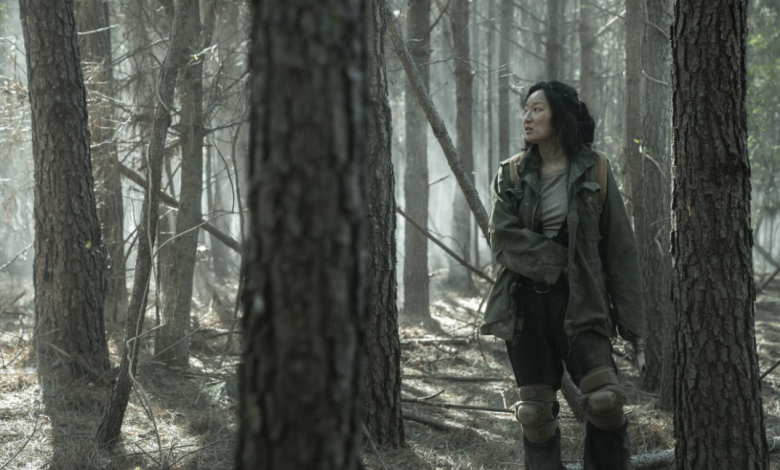Tales of the Walking Dead: When Fantasy Goes Too Far

Charlie von Peterffy ‘24 / Entertainment Monthly Staff Writer
On October 31st, 2010, at 9 pm on the cable television network AMC, a sheriff named Rick Grimes arrived at a gas station in search of fuel. Unfortunately, he stumbled on a much more tragic sight: old, abandoned rusted-out cars; rotting bodies, with the only noticeable movement being the flies surrounding them; and imagery of destruction that marks the end of civilization. As Rick explores, he finds a little girl in a bathrobe wandering around and offers her help. However, she is in no shape to be helped. Growling, she turns around with bloodshot eyes and a considerable gash around her mouth, making her teeth visible, and begins to charge at Rick. With no other choice, Rick shoots her in the head, ending the encounter with the loud thud of her body collapsing. And with that, The Walking Dead was born. Back then, it was hard to imagine that the show would grow to last 11 triumphant seasons with massive viewership ratings, spawning various spin offs such as Fear the Walking Dead and The Walking Dead: World Beyond. Even now, as the original show is ending, the franchise shows no signs of slowing down––for better and worse.
Tales of the Walking Dead, the latest spinoff in The Walking Dead universe, is an anthology show that was launched on the promise of constructing unique stories from different survivors––both new and old––as they survive the zombie apocalypse. Each episode is its own self-contained story, following different casts of characters as they deal with new obstacles. With actors such as Terry Cruise (Joe), Samanta Morton (Dee/Alpha), Parker Posey (Blair), and other A-list stars, each episode consists of great performances and more action-packed zombie killing. Unfortunately, due to bloated scripts, overly elusive/fantastical storylines, and a lack of substance, the show is a mess of varying quality that barely stays grounded or consistently entertaining––ranging from incredibly strong storytelling to severely lackluster episodes.
The stories are primarily cartoonish. Most of the show’s episodes use themes and storylines of fantastical/sci-fi elements. While these stories are unique, they are poorly applied. The show relies too heavily on these elements, using them as the backbone of these stories. Unfortunately, in doing so, they neglect the characters and forget the franchise’s appeal: zombie slashing, character growth, and moral ambiguity. Even so, some episodes fare better than others. For example, the second episode, “Blair; Gina,” overemphasizes an illogical plot, while episodes like “Amy; Dr. Everett” ground themselves by focusing more on the characters and less on the events. But overall, five of the six episodes lean too hard into these new plotlines, disregarding substance and strong characters to root for.
The cast is excellent and by far the most robust component of the series. But unfortunately, the writing is too bland to make their characters adequate. Having one-off episodes with new characters every week leaves no room to explore these personalities. This format can only work for returning characters. The third episode, “Dee,” where The Walking Dead antagonist Alpha (Samantha Morton) returns, is the best example. Unlike new characters, Alpha already has a solid foundation; as the main antagonist of the original show for two seasons, she’s had many expansive moments in the franchise’s past. As a standalone episode here, her story works perfectly. It provides an additional backstory that expands on her character and brings many twists into the fold about her becoming the villain she is. Plus, seeing her character deteriorate even further with an outstanding performance from Morton is a impressive site. The other characters, meanwhile, have no connection to the rest of the franchise, so they feel more like cutouts pasted where they seemed to fit. They could have used some serious rewrites.
The visuals are excellent. With similar set designs and makeup quality as its predecessors, Tales of the Walking Dead is just as violent and gory as expected. It also uses CGI very effectively. Every time a digital image appears on screen, it is virtually impossible to discern real from fake. While they’re used for poorly written reasons (having a bunch of mini Jesus statues crawl on the ground isn’t exactly subtle), they blend in well with their surroundings, thus enhancing the show’s visual flair.
For the most part, Tales of the Walking Dead is filled with missed opportunities and disappointing attempts. It lacks three-dimensionality and creativity but has lots of b-grade zombie fun and great acting to balance it out, making for half-assed popcorn thrills. For those looking for whacky, explosive fun, this series is worth it. For those searching for narrative complexities and nuanced character interactions that make the original show so appealing, either skip this show or only watch “Dee,” as it sorely misses everywhere else.